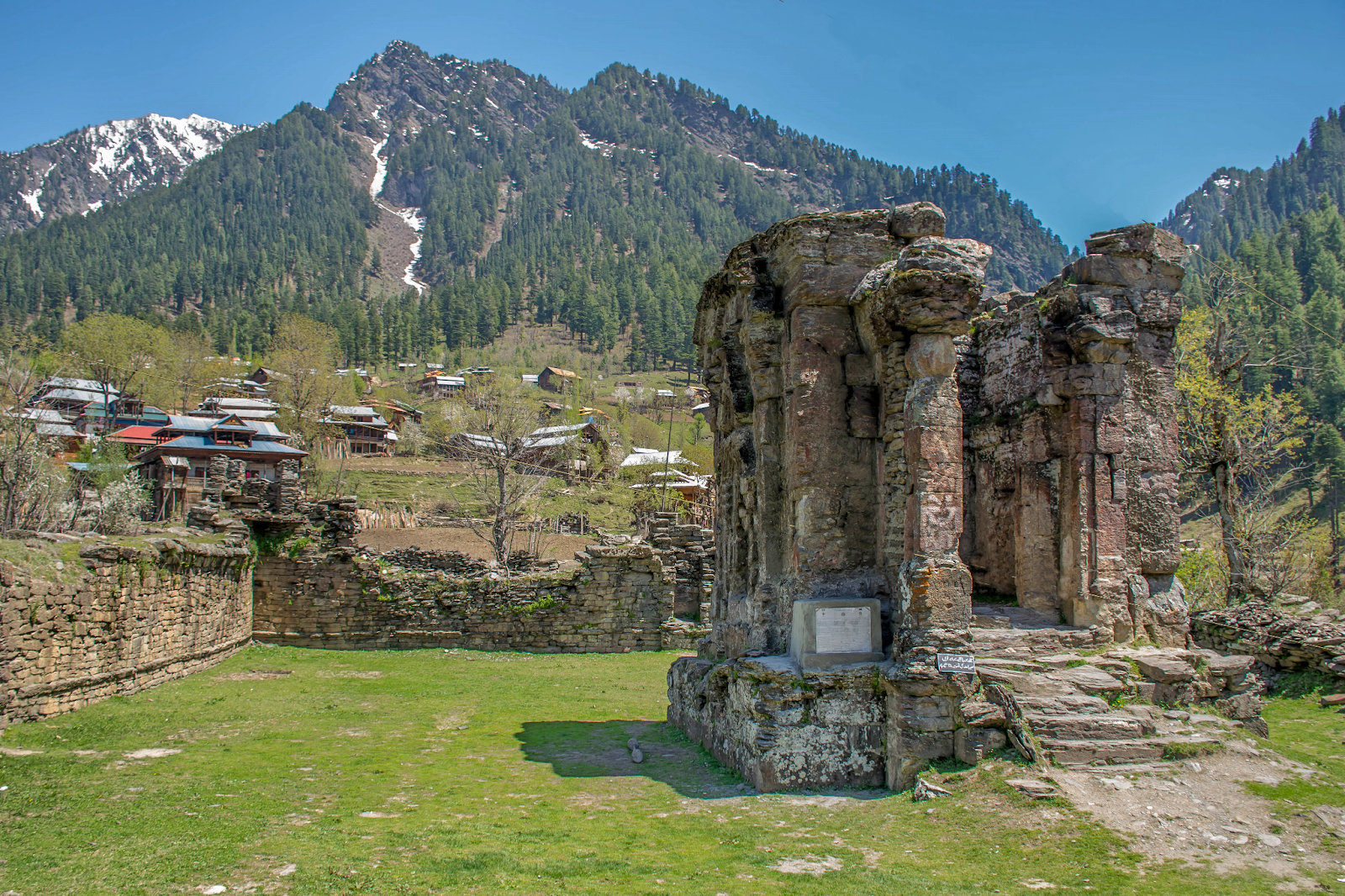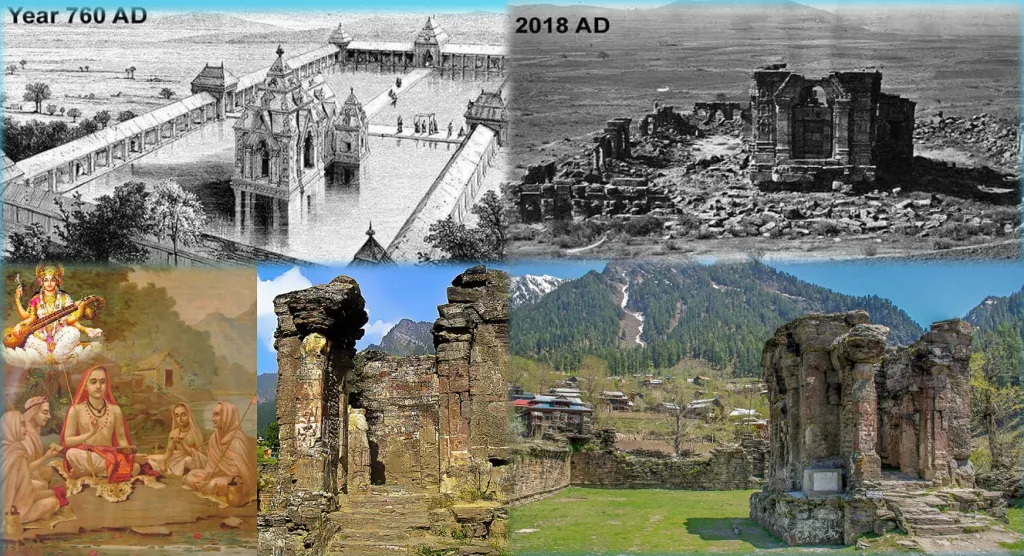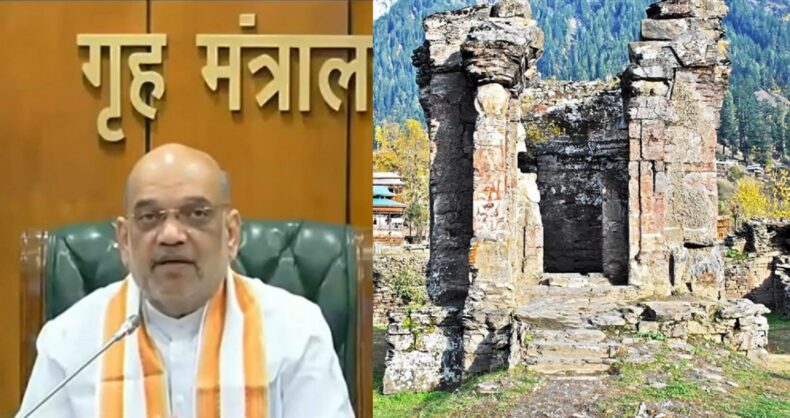According to Union Home Minister Amit Shah, the Indian government would try to construct a Sharda Peeth corridor in Pakistan-occupied Kashmir, similar to the Kartarpur corridor, so that devotees can take part in the Shardha Yatra. Amit Shah made the remarks as he virtually opened the Mata Sharda Devi Temple in the Kupwara area of north Kashmir, which is situated along the Line of Control.

On the first day of Chaitra Navratri, worshippers may enter the Mata Sharda Devi temple in Teetwal village, Kupwara district, North Kashmir. Pakistan-occupied Kashmir is about 500 meters from the temple (PoK). Sri Sringeri Math and Seva Sharda Samiti Kashmir constructed it.
Amit Shah, the Union Home Minister, virtually inaugurated the hallowed site. Tejaswi Surya, national president of the Bharatiya Janata Yuva Morcha (BJYM) and a representative for Bengaluru South, also attended the event.
The president of the Save Sharda Committee, Ravinder Pandita, requested a Shardha yatra corridor in the pattern of Kartarpur, and there is no doubt that the Indian government would make efforts in this direction, the home minister stated while speaking at the occasion.

History of Sharda peeth
Sharda Peeth, the Kashmiri name for the Hindu goddess Saraswati, translates to “the seat of Sharada.” Due to its location at the meeting point of three streams, “Sharada” may possibly be connected to the proto-Nostratic words “sarv,” which means “flow or stream,” and “daw,” which means “blow, tip, or rock.” A Kashmiri Pandit is shown in a picture of Sharada Peeth taken in 1893 by British archaeologist Sir Aurel Stein.
Sharada Peeth may have served as both a temple and an educational facility, making its origins unclear and its history complex. Although there is no concrete proof to support it, Lalitaditya Muktapida (r. 724 CE–760 CE) most likely ordered it. Al-Biruni originally described the location as a respected shrine with a wooden statue of Sharda, although he had never visited Kashmir and had to rely on hearsay for his information.
Kashmiri Pandits have long called for a Sharda Peeth corridor in the model of Kartarpur. Some of the villager’s lands have been given to the temple construction committee for use in building the temple. About 136 kilometers away from the historical location, a mosque and a gurdwara are also being constructed.
The Gurdwara Darbar Sahib in Lahore, Pakistan, is now accessible to Sikh pilgrims in India without a visa thanks to the opening of the Kartarpur Corridor in November 2019. The Gurdwara Dera Baba Nanak in the Gurdaspur region of Indian Punjab is linked to the Gurdwara Darbar Sahib in Pakistan via a 4.7-kilometer-long corridor.
The pilgrimage to Sharda Peeth was discontinued in 1948 when the primary temple was placed under the PoK. To restart it, Kashmir’s Save Sharda Samiti and Sringeri Math erected the Mata Sharda Devi Temple. The area where the temple now stands was once the site of a pilgrimage camp for the Sharda Peeth.
The speaker said, “Today I am not there, but whenever I come to Jammu, my trip will begin after giving prayers at this temple.” He praised everyone who helped achieve this significant milestone, particularly Lieutenant Governor Manoj Sinha, and referred to it as the start of a new era.

He said that the process of learning about the Sharda culture begins with the placement of the idol. It is said to be the first step in the foundation of the Enlightenment, connecting sensibility to the infinite consciousness of the cosmos. To connect with their culture and visit the mother, visitors would travel tremendous distances.
Road Ahead
According to Amit Shah, the repeal of Article 370 means returning the Union Territory to its previous customs, culture, and “Ganga-Jamuni Tehzeeb.” He added that Sharda Peeth was formerly thought of as the intellectual hub of the Indian subcontinent. “People used to come here for education and spirituality, both from India and other nations. Adi Shankaracharya attained enlightenment at this location. The Sharda script bears Goddess Sharda’s name.
He pledged that the long-standing traditions of the valley will be revived and emphasized that it was our obligation to maintain peace in Jammu and Kashmir.













